Amazon MAP pricing can be confusing even for seasoned brand owners. Consumers, too.
Many sellers don’t understand how to enforce MAP pricing on Amazon. As a result, they lose out on potential profits.
In this article, I’ll provide a comprehensive guide on enforcing map pricing on Amazon. I will cover everything from understanding MAP policies to setting up MAP enforcement strategies on Amazon.
Whether you a new brand owner or an experienced seller, this post is for you!
What Is Amazon MAP Pricing?
MAP stands for Minimum Advertised Price. It is the lowest price that a reseller can advertise for a particular product.
Many brands choose to enforce MAP pricing in order to protect their margins and maintain an attractive image for their products.
MAP prices are set by the manufacturer or brand. They are implemented to protect resellers and ensure that everyone is playing by the same rules.
For example, let’s say that Brand A has a Manufacturer’s Suggested Retail Price (MSRP) of $100 for their new product. They might set a Minimum Advertised Price of $80, which means that all resellers must advertise the product for at least $80.
If a reseller were to advertise the product for less than that amount, they would be in violation of the MAP pricing policy. This can even lead to the manufacturer cutting ties with them.

What Is a MAP Violation?
A MAP violation occurs when a reseller advertises a product for less than the MAP set by the manufacturer.
It’s important to note that MAP violations are different from pricing errors.
Pricing errors occur when resellers unintentionally list a product lower than the MAP, while MAP violations occur when the act is done on purpose.
Pricing errors can happen for a variety of reasons, such as human error or a technical glitch on the seller’s end. On the other hand, MAP violations are often committed intentionally in an effort to undercut the competition.
We’ll discuss how to spot and address MAP violations in a bit.
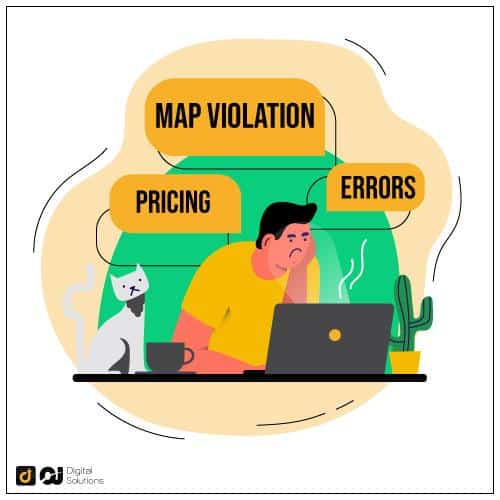
How To Enforce MAP Pricing On Amazon
Although Amazon doesn’t enforce MAP policies, there are some things you can do to protect your prices. Here are some of them:
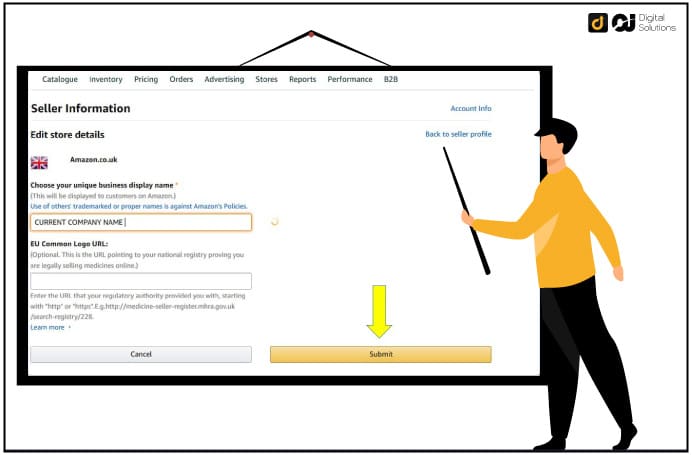
Identify Seller Information
The first step to Amazon MAP enforcement is identifying the sellers who are violating your policy.
This includes the name of the seller, their contact information, and the price they are selling your product for. This can be difficult, as Amazon does not publicly display seller information on product listings.
However, there are a few workarounds.
One way is to search for your product on Amazon and see who’s selling it for the lowest price.
You might be able to find out who the seller is by contacting them directly and asking for their information. However, there is no guarantee that they’ll provide it.
Another way is to Google your product. This will bring up all the listings for your product, including those from Amazon.
From there, you can click on the listing and find out who the seller is. This method is not foolproof, as sellers may change their information frequently.
Once you have the contact information for your Amazon MAP violators, you can start enforcing your policy with them.
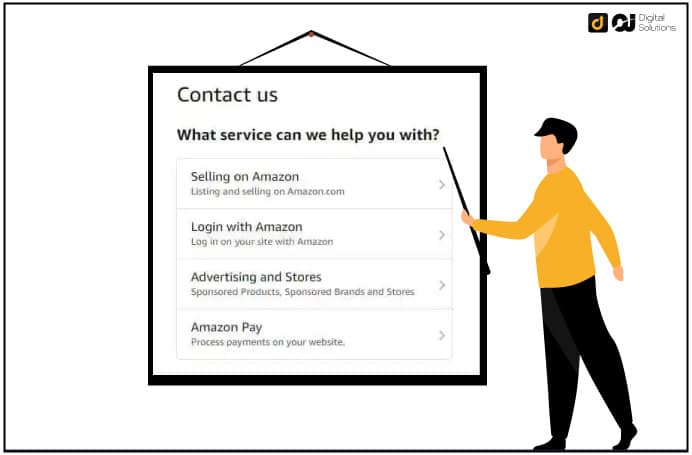
Communicate Violations To The Sellers
You can do this through Amazon’s messaging system or directly through email or phone if you have the seller’s information. Be sure to include your MAP policy and the seller’s price for your product in your message.
It’s important to be firm but polite in your communication.
The seller should understand that you are serious about enforcing your MAP policy, but you shouldn’t come across as confrontational or aggressive either. This could make the seller less likely to comply with your request.
Once you have contacted the seller, give them a reasonable amount of time to adjust their prices.
This will allow them to change their listing and avoid any penalties. How long you give the seller will depend on the situation, but a few days is usually sufficient.
If the seller does not adjust their prices within the given timeframe, you can take further action. You can remove the seller from your approved list. If necessary, legal action is an option too.
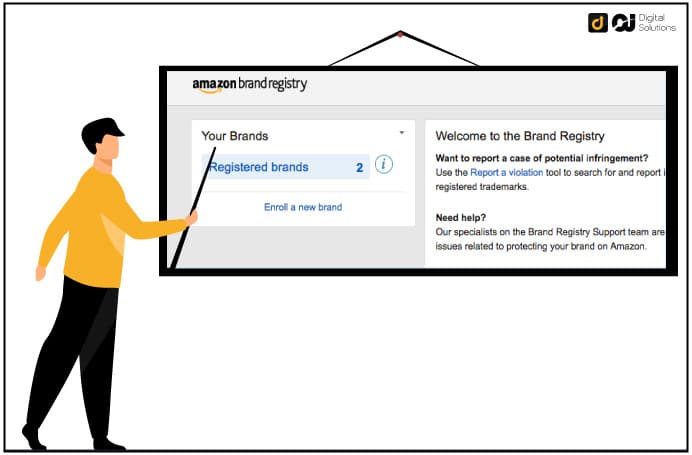
Brand Registration
Amazon Brand Registry is a program that allows brands to protect their intellectual property on Amazon. This includes trademarks, logos, and product images.
To enroll in Brand Registry, an active trademark for your brand is required.
Once you’re enrolled, you’ll be able to add your product images and information to Amazon’s database. This will help Amazon to better identify your products and protect them from counterfeiters.
Amazon Brand Registry also gives you access to tools that make enforcing your policies on Amazon easier. This includes the ability to report sellers who are breaking your MAP policy.
While enrolling in Brand Registry is not required to enforce your MAP policy on Amazon, it comes with benefits that you shouldn’t ignore.
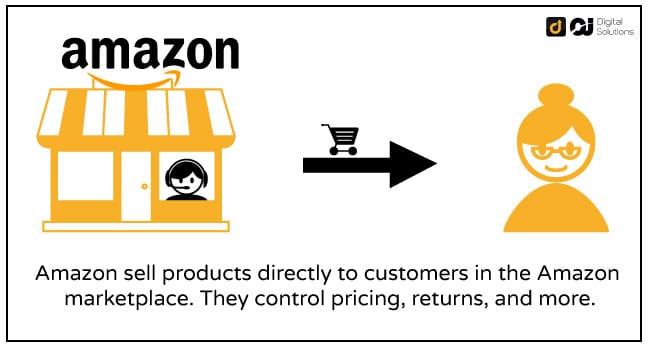
Sell Product Directly To Consumers
Selling your products directly to consumers through Amazon is another way of enforcing your MAP policy. This lets you bypass the middleman and have full control over your pricing.
You can do this by creating a listing for your product on Amazon and setting the minimum price yourself. You can also use Amazon’s Fulfillment by Amazon (FBA) program to have Amazon store and ship your products for you.
Selling directly to consumers through Amazon is a good option if you’re having trouble enforcing your MAP policy. It allows you to control the minimum price of your product and avoid working with sellers who might break your policy.
There are some downsides to selling directly to consumers, however.
It can take more time and effort to manage your listings and fulfill orders. You’ll also need to pay Amazon fees, which you might have to pull from your profits.
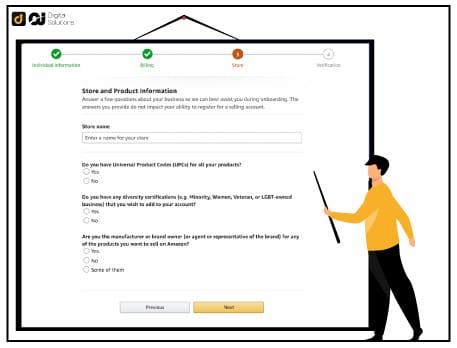
Identify Authorized Retailers
Another way to enforce your MAP policy is by identifying authorized retailers. These are retailers you have approved to sell your products.
Once you’ve identified authorized retailers, you can provide them with special codes or links that allow them to sell your products at the price you’ve set.
This is ideal if you want to work with retailers but don’t want to give them free reign over your prices. It can also be helpful if you’re having trouble finding retailers who are willing to follow your MAP policy.
There are some downsides to this approach, however.
Tracking down unauthorized retailers can be difficult. You’ll also need to regularly update your authorized retailer list, which can be time-consuming.
However, the benefits of this approach outweigh the negatives. Keep that in mind.
Ongoing MAP Enforcement On Amazon
Enforcing your MAP policy on Amazon is a continuous process.
You’ll need to regularly check listings to make sure that sellers are following your policy. You also need to keep an eye out for new sellers who may not be aware of your policy.
One way to help with enforcement is to work with an Amazon MAP monitoring service.
These services will track prices for you and send you alerts for MAP violations. This is worth looking into if you don’t have time to check prices yourself on a regular basis.
Another way is to hire someone to help you with enforcement. This is suitable for people who prefer enforcing the policy themselves but struggle with doing it alone.
What Can Brands Do If They Spot MAP Violations On Amazon?
If you spot a MAP violation on Amazon, there are a few things you can do:
First, you can report the seller to Amazon. This will help ensure that the seller is aware of your policy and that they’re following it.
Second, you can request that Amazon remove listings that violate your policies. This can help if you’re struggling with getting a seller to comply with your policy.
Finally, you can contact the seller directly and ask them to follow your MAP pricing policy. This is often the quickest and most effective way.
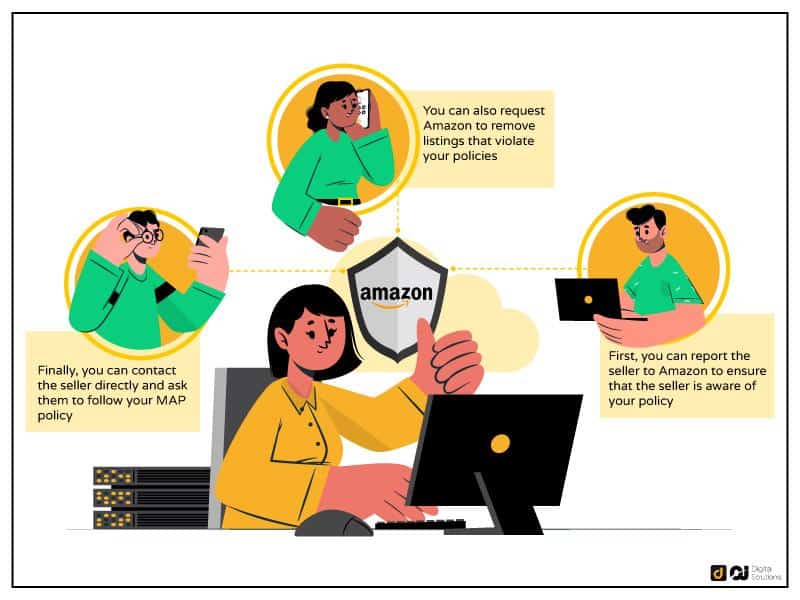
Why Is a MAP Pricing Policy Important For Your Brand?
There are a few key reasons why MAP enforcement is important. These include:
It Preserves Your Brand Value
When a customer buys a product, they are not only paying for the item itself, but also for the brand value.
And when you sell your products at a discount, it can undermine the value of your brand.
If people notice that your products are always on sale, they might start questioning if your products are worth the full price. This can hurt your brand value and make it harder for you to charge premium prices in the future.
For example, if Gucci bags were regularly sold at 50% off by third-party sellers, it will eventually lose its status as a luxury brand.
However, with MAP pricing, brands can preserve their value and keep customers coming back.
It Protects Your Authorized Resellers
When you sell through authorized resellers, you are entrusting them to maintain your brand standards and uphold your prices.
Resellers who are constantly undercut by unauthorized sellers may be less likely to continue working with your brand. This can lead to damaged relationships and loss of sales.
MAP pricing helps protect your authorized resellers so they can continue to sell your products at a fair price. This, in turn, helps in growing your business and reaching more customers.
It Helps You Avoid Price Wars
Price wars refers to a situation where two or more companies are vying for market share by constantly undercutting each other’s prices.
It can often lead to a race to the bottom. When everyone is selling at rock-bottom prices, it becomes difficult to make a profit or stand out from the competition.
It Protects Your Margins
Without MAP pricing, your margins will likely be squeezed by unauthorized sellers.
Because they can sell at whatever price they want, it’s fairly common for them to undercut authorized resellers. This could lead to reduced profits and cash flow problems in the long run.
With MAP pricing, you can protect your margins and ensure that you’re still making a profit on each sale.
It Helps Avoid Loss-Leader Products
Loss-leader products are items sold at a loss in order to attract customers to brick-and mortar-stores or other online marketplaces.
While this can be effective in the short-term, it isn’t sustainable. Selling products at a loss eats into your margins and can lead to financial difficulties.
Loss-leader products can be easily avoided when sellers are selling at a fair price.
How Does Minimum Advertising Pricing Work On Amazon?
Amazon MAP prices are set by the manufacturer or supplier. They are typically based on the MSRP (manufacturer’s suggested retail price).
On Amazon, MAP affects both the “Buy Box” price and the price you see when you click on a product listing.
Does Amazon Enforce MAP?
No, Amazon is not particularly concerned about upholding your MAP prices.
They aren’t actively trying to prevent resellers from considerably reducing their prices either.
Amazon does not recognize MAP pricing policies. You, the seller, are responsible for creating the agreements and getting your resellers to abide by them.
Since winning sales is their top priority, the majority of online marketplaces for e-commerce retailers don’t follow up on MAP pricing.
Even after you implement a MAP pricing policy on Amazon for authorized sellers, the marketplace won’t keep track of sellers who do not follow MAP pricing rules.
Does Amazon Display MAP Pricing On Product Listings?
No, Amazon does not publicly display Minimum Advertised Price values on product listings.
If you want to find out a product’s Minimum Advertised Price, you’ll have to contact the manufacturer or supplier directly. Amazon does not include this information on their product listings.
Why Is MAP Pricing So Hard To Manage On Amazon?
As an Amazon seller, you might be wondering why managing MAP pricing is difficult.
After all, other marketplaces enforce strict policies against price manipulation.
The simple answer is that Amazon does not want to get involved in enforcing MAP agreements between brands and their resellers.
This hands-off approach by Amazon makes it difficult to manage MAP pricing on the platform.
Without any enforcement from Amazon, sellers are free to set their own prices, regardless of the brand’s MAP pricing policy. This often leads to price wars and a race to the bottom.
It’s important to be aware of these difficulties and take steps to protect your prices and brand image. Otherwise, you may find yourself in a situation where your products are being sold at abnormally low prices.
FAQ – Frequently Asked Question
Who Sets MAP Pricing?
The MAP of a product is typically set by the manufacturer. MAP policies are put in place by manufacturers to prevent retailers from selling their products below a certain price.
What Is MAP Compliance?
MAP compliance is when a retailer agrees to sell a product at the price set by the manufacturer. This helps guarantee that products are sold at a fair price and that manufacturers can maintain healthy profit margins.
Are MAP Policies Legal?
Yes, MAP policies are legal, but they are not legally binding (in some cases).
Manufacturers have the right to set the prices of their products, while retailers agree to sell products at those prices when they become authorized retailers.
The Bottom Line
Enforcing your MAP policy on Amazon can be a time-consuming process, but it’s essential to protecting your brand.
As you can see, there are a few different ways to enforce your MAP policy on Amazon. Each option has its own set of pros and cons, so you’ll need to decide which one is best for you.
Whatever option you choose, make sure you’re consistent in enforcing your policy.
By taking the time to enforce your policy, you can maximize your profits and avoid legal problems down the road.
I hope this article has helped you with enforcing MAP pricing policies on Amazon. If you have any questions, please feel free to leave a comment below. I’ll get back to you as soon as I can.




